San Elijo Lagoon Inlet Facing Possible Closure
Follow ( 0 Followers ) X Follow E-mail : * Follow Unfollow
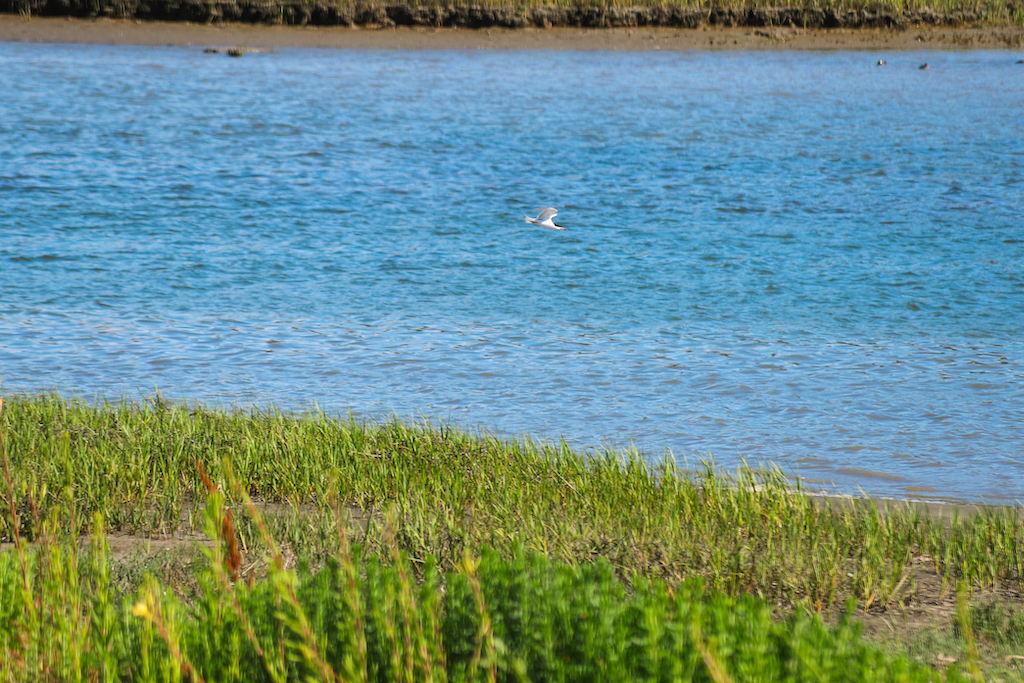
As a Marine Protected Area (MPA), Batiquitos Lagoon is full of marine life. This lagoon provides refuge for endangered birds and other types of wildlife that are associated with MPAs. Nature Collective is currently carrying out planting, maintenance and monitoring at several sites to enhance sensitive habitats.
By removing invasive plants, such as Eucalyptus trees, Canary Island palms and pepperweed, we are restoring habitats where endangered animals and plants can colonize, and spread out. From coastal sand dunes to salt marsh habitats, plants that are indigenous to the area are taking root, and places for birds to rest and refuel are encouraging new life.
If you wander through the area you will now see that these plants are thriving.
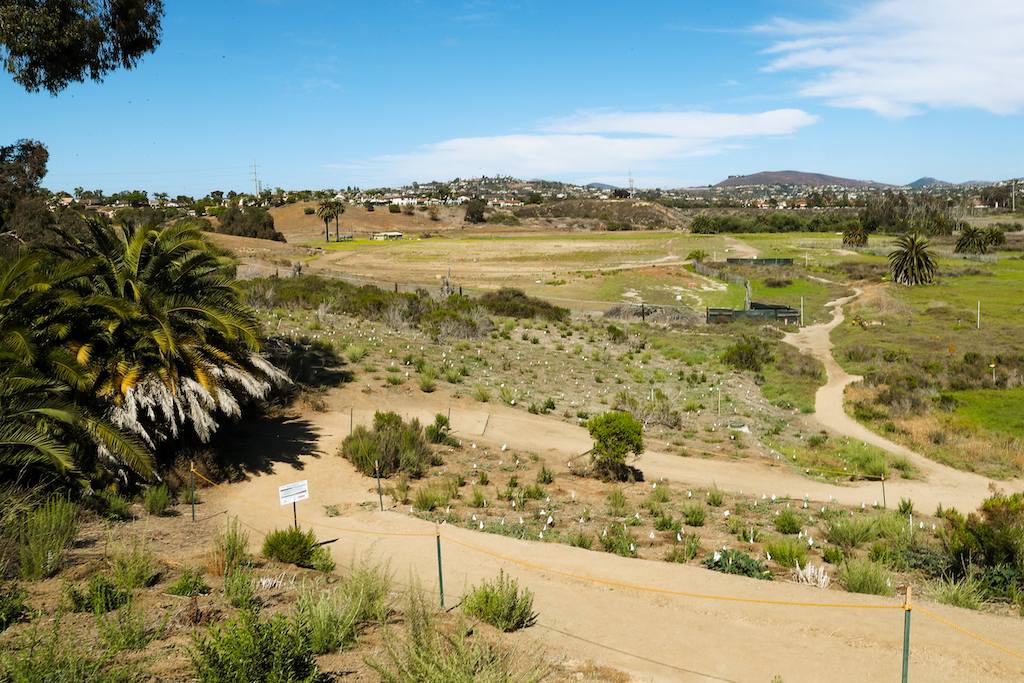
Above: Coastal Sage Scrub has been restored on the slopes adjacent to the marsh and lagoon. These areas were previously dominated by invasive species, such as black mustard and fennel. This habitat is home to the California Gnatcatcher, a federally listed species whose population number is increasing because of regional efforts to restore its habitat.
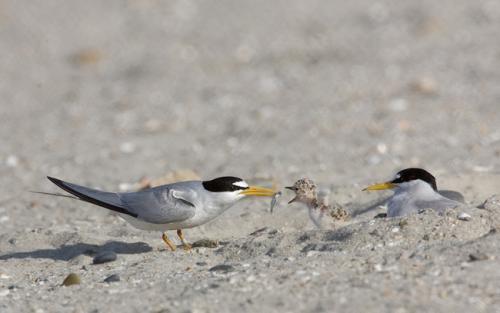
Above: California Least Tern (Photo by Chris Mayne)
This endangered bird lives in coastal dunes and fishes in shallow waters in spring and summer. Its other home is in Central and South America in winter. You can recognize them when they fish! They look like toy fighter planes when they dive, retracting their pointy wings and plummeting beak-first toward the water.
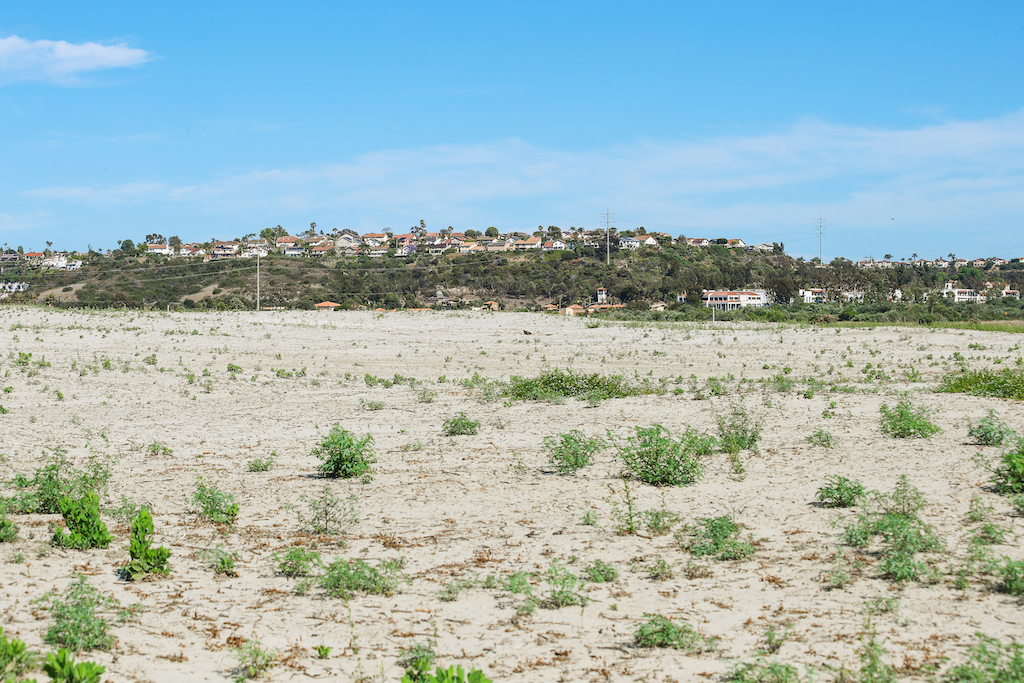
Above: To create habitat for the endangered California Least Tern and other shorebirds, Nature Collective removed a substantial amount of invasive vegetation from the dune habitat seen here in the Eastern area of Batiquitos Lagoon.
California Least Tern often nest in unprotected coastal areas. These shorebirds prefer sandy areas free of vegetation. Their nests contain little to no nesting material – sometimes small shell fragments are used. Their nests resemble those of other birds that nest in the area, including Killdeer and the endangered Western Snowy Plover.
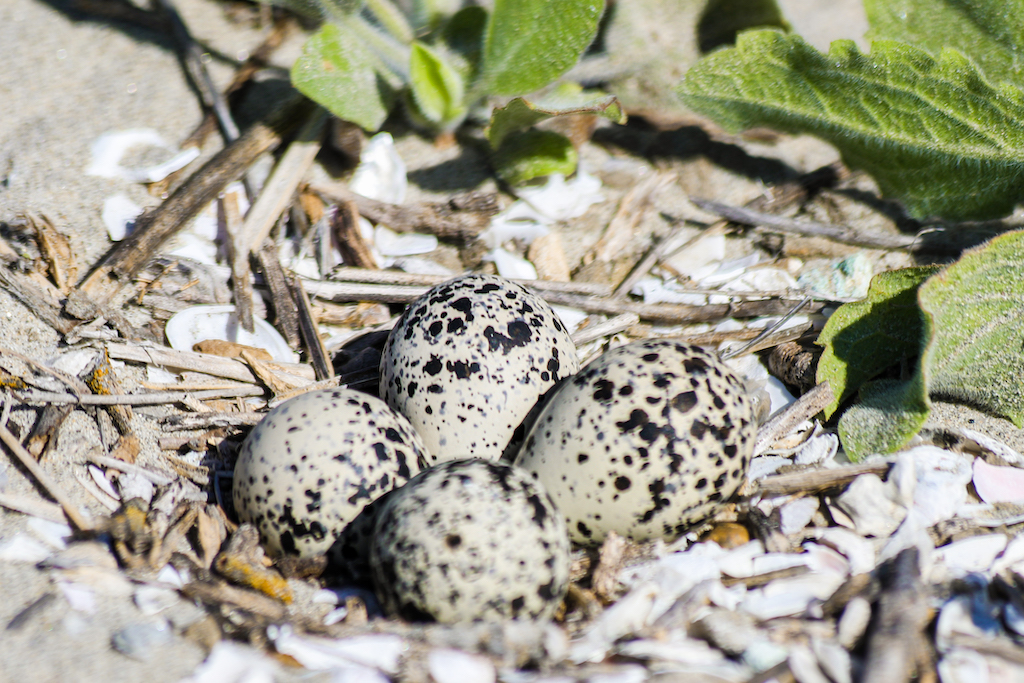
Above: eggs in a nest of a Western Snowy Plover at Batiquitos Lagoon
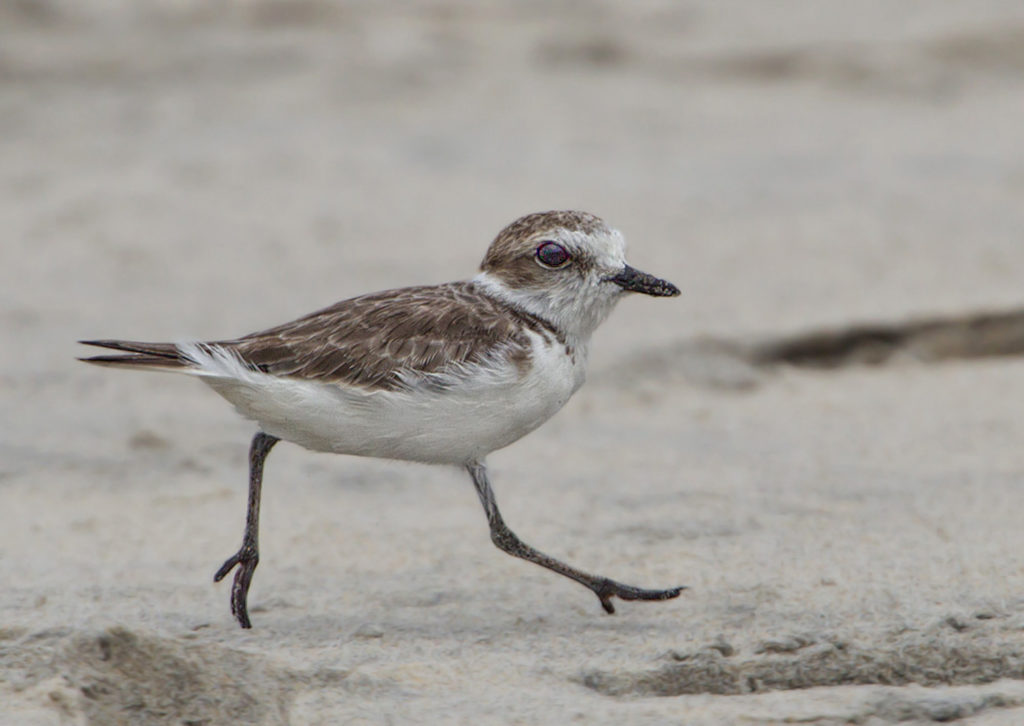
Above: Western Snowy Plover (photo by Chris Mayne)
This bird’s status is listed as federally threatened. Look for Western Snowy Plovers foraging in sandy areas off beaten paths, the beaches and lagoon mud flats year-round. They are nourishing on insects, along with marine worms and crustaceans.
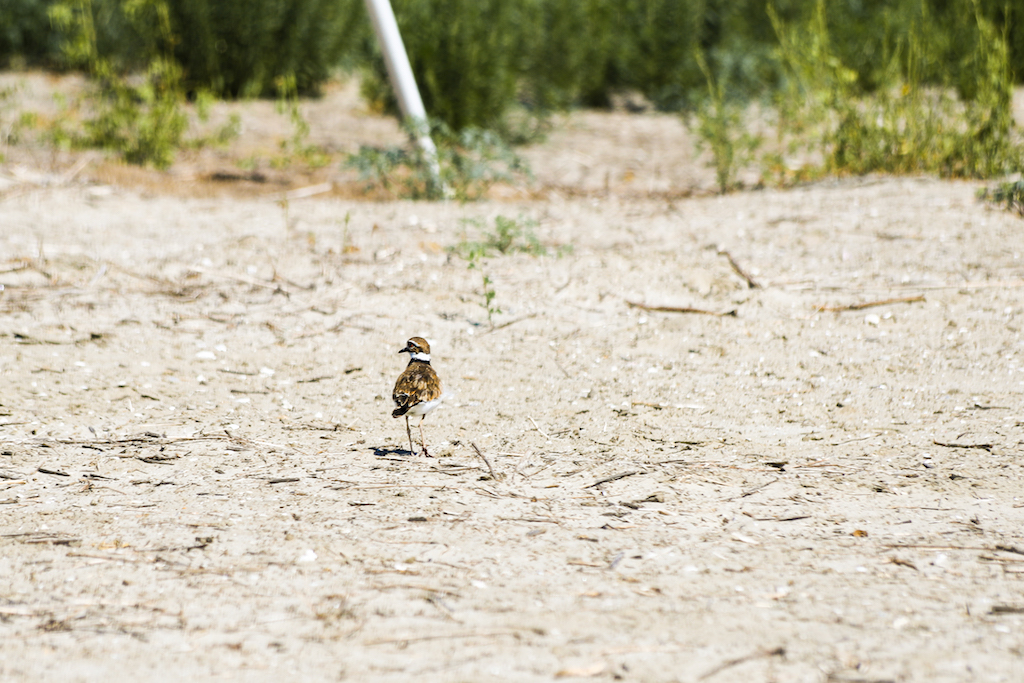
Above: Killdeer Charadrius vociferous
This shorebird of personality is pictured at Batiquitos Lagoon. And it’s a good actor: faking a broken wing and pretending to be an easy snack, it lures predators away from its nest. Listen for the call that sounds like “kill-deer,” and carries a long way.
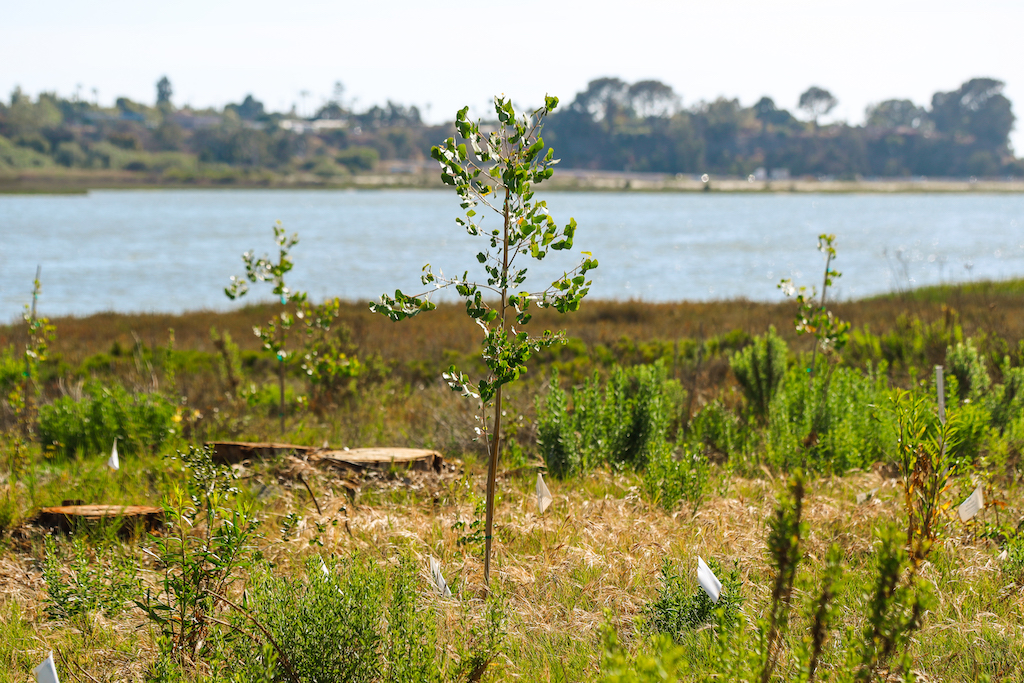
Sycamores, cottonwood and coast live oaks, as well as other plants, have been planted as part of our ongoing restoration at Batiquitos Lagoon. Did you know? Batiquitos is the Spanish name for “little water holes”.
This restoration is administered by California Fish + Wildlife, and in partnership with Nature Collective, Batiquitos Lagoon Foundation and WildCoast.
Nature Collective continues to restore and revitalize wetlands throughout Southern California to benefit both coastal and inland habitats + communities.
Yes, I am making a donation today to help connect people to experience and protect nature now, and always.
Follow ( 0 Followers ) X Follow E-mail : * Follow Unfollow
Follow ( 0 Followers ) X Follow E-mail : * Follow Unfollow